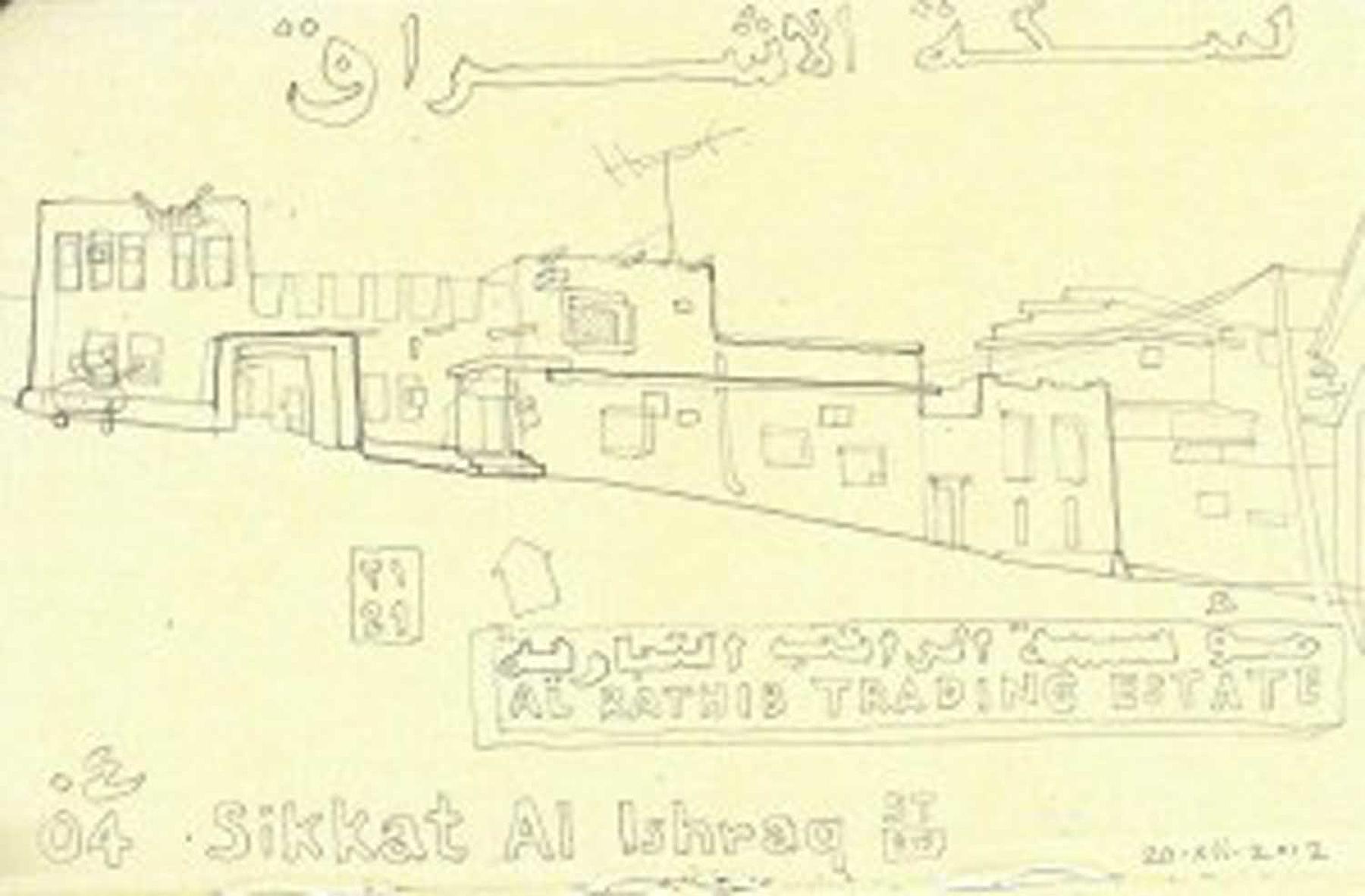Doha is Flat
As I walk along Sikkat al Hedaya, into square A2, I am drawn by the slope. Old Doha is a consistently carved sculpture of horizontal forms, accented by verticals, so to encounter a diagonal as strong as this is unusual. If I close my eyes and keep walking, I think I can feel the topography of the land before the buildings.
As I turn the corner onto Sikkat al Ishraq and climb up to number 21, which sits at the highpoint, it is an easy decision what I should draw. The frontage of this substantial house, and its neighbours is a joy of urban collage, although, looking at the open wound on the face of number 21, where its skin of rough render has fallen away and its rubble stone flesh-and-bone is revealed, it does look as if it may fall down entirely, if there are any more rainstorms this Winter.
That would indeed be a tragedy because inspite of the fact that its future is secure as a ‘heritage house’ – due to be renewed by QMA or PEO (I think) – what does that mean ? Does it mean conserved or demolished and reconstructed ? Will it lose its patina of age; its character, and its context ?
It’s face is full of character; the interplay of rhythms and syncopations is charming – and natural. One feels the common sense logic of windows just being where they want to be;
being balanced with the gentle order of repeated proportions and approximate alignments. There are eccentricities here to which we could claim there is no apparent rhyme or reason but what is more ‘reasonable’; for it to be the way it wants to be, through a natural process of influence and response, or to be forced to be something else ?
The frontage of the three houses is a set-piece of Old Doha; ‘traditional’ masonry and ‘early modern’ side by side. The more recent concrete portal of number 21 blurrs the boundaries between the two periods. Together the parapet line rises and falls 6 times up and down; carved city. Together, thicks and thins, and verticals and horizontals, chime together to make rich music.
And I must not forget that an important part of the music is the grandly named Al Rathib Trading Estate, housed within number 21. It is a very small convenience store; does it belong ? How long has it been here ? Should it be erased in the renovations ? Or should it be allowed to continue; adding surprise and variety to the street; bringing the scene to life in its very quiet way, signal of a living city, with all its quirks and foibles ?
As I leave I realize the absolute quietness here. Even the pigeons on the tall TV aerial are silent. The only sound is the sharp crunch of gravel underfoot from a passer by, and a bicycle bell as a man comes out of number 23, on his way to work.

